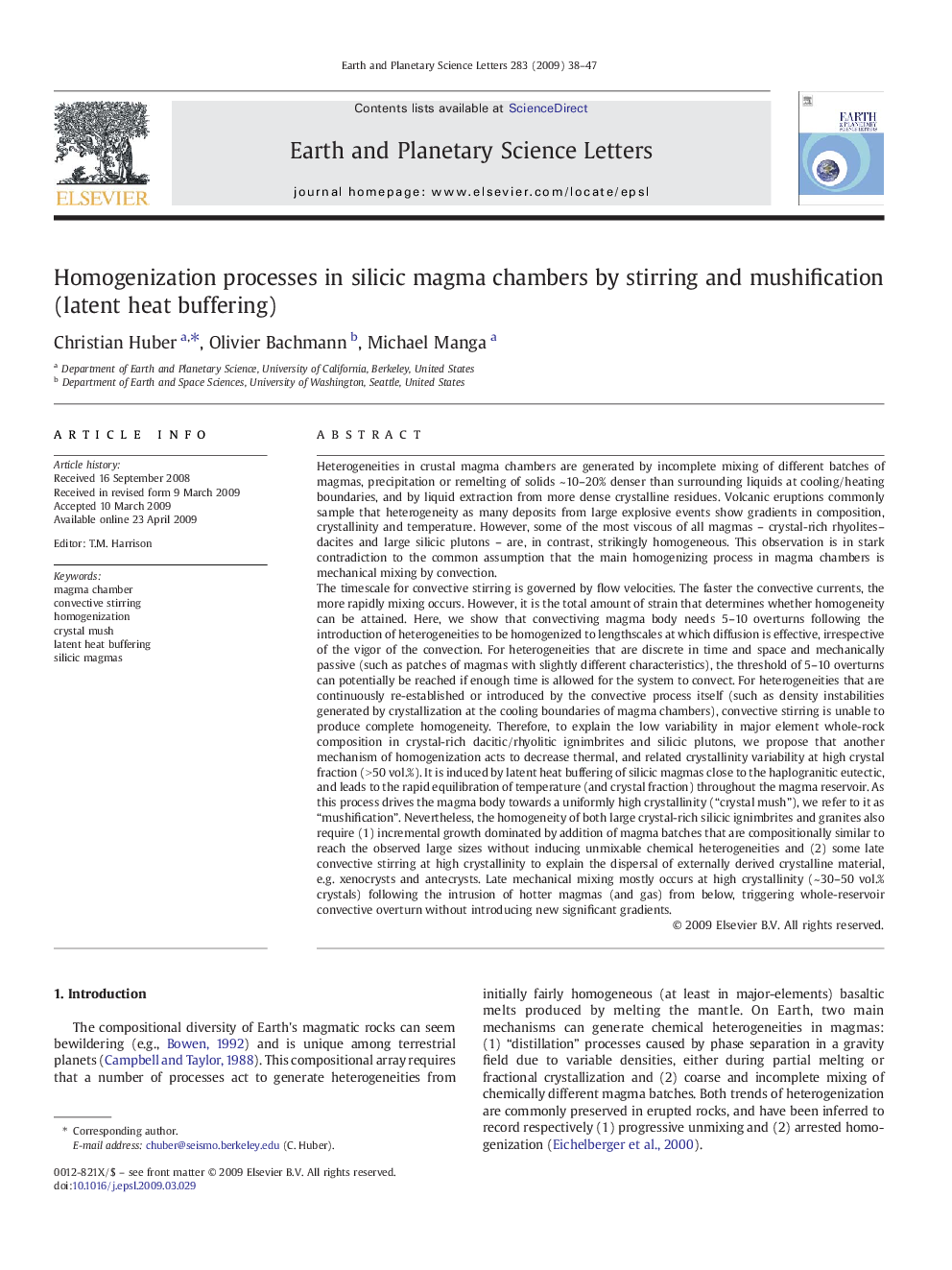| کد مقاله | کد نشریه | سال انتشار | مقاله انگلیسی | نسخه تمام متن |
|---|---|---|---|---|
| 4679023 | 1634872 | 2009 | 10 صفحه PDF | دانلود رایگان |

Heterogeneities in crustal magma chambers are generated by incomplete mixing of different batches of magmas, precipitation or remelting of solids ~ 10–20% denser than surrounding liquids at cooling/heating boundaries, and by liquid extraction from more dense crystalline residues. Volcanic eruptions commonly sample that heterogeneity as many deposits from large explosive events show gradients in composition, crystallinity and temperature. However, some of the most viscous of all magmas – crystal-rich rhyolites–dacites and large silicic plutons – are, in contrast, strikingly homogeneous. This observation is in stark contradiction to the common assumption that the main homogenizing process in magma chambers is mechanical mixing by convection.The timescale for convective stirring is governed by flow velocities. The faster the convective currents, the more rapidly mixing occurs. However, it is the total amount of strain that determines whether homogeneity can be attained. Here, we show that convectiving magma body needs 5–10 overturns following the introduction of heterogeneities to be homogenized to lengthscales at which diffusion is effective, irrespective of the vigor of the convection. For heterogeneities that are discrete in time and space and mechanically passive (such as patches of magmas with slightly different characteristics), the threshold of 5–10 overturns can potentially be reached if enough time is allowed for the system to convect. For heterogeneities that are continuously re-established or introduced by the convective process itself (such as density instabilities generated by crystallization at the cooling boundaries of magma chambers), convective stirring is unable to produce complete homogeneity. Therefore, to explain the low variability in major element whole-rock composition in crystal-rich dacitic/rhyolitic ignimbrites and silicic plutons, we propose that another mechanism of homogenization acts to decrease thermal, and related crystallinity variability at high crystal fraction (> 50 vol.%). It is induced by latent heat buffering of silicic magmas close to the haplogranitic eutectic, and leads to the rapid equilibration of temperature (and crystal fraction) throughout the magma reservoir. As this process drives the magma body towards a uniformly high crystallinity (“crystal mush”), we refer to it as “mushification”. Nevertheless, the homogeneity of both large crystal-rich silicic ignimbrites and granites also require (1) incremental growth dominated by addition of magma batches that are compositionally similar to reach the observed large sizes without inducing unmixable chemical heterogeneities and (2) some late convective stirring at high crystallinity to explain the dispersal of externally derived crystalline material, e.g. xenocrysts and antecrysts. Late mechanical mixing mostly occurs at high crystallinity (~ 30–50 vol.% crystals) following the intrusion of hotter magmas (and gas) from below, triggering whole-reservoir convective overturn without introducing new significant gradients.
Journal: Earth and Planetary Science Letters - Volume 283, Issues 1–4, 15 June 2009, Pages 38–47